
Welcome to the wild world of firearms and ammunition, where the options can be as diverse as those who make them. It might seem strange to some to compare the 22LR VS 223, but they have more in common than you may suspect. Whether you’re a seasoned shooter or a newcomer to the world of firearms, understanding the differences between various types of ammunition is crucial.
What makes them different? The .223 Rem is a larger and much more powerful cartridge. Not only does it exit the barrel at higher velocities, but it also carries more energy. When comparing 22LR VS 223, it’s obvious that the performance of the .223 Rem outmatches the smaller rimfire option Let’s discuss the differences between these staple calibers, which tasks each is best at, and why you might choose one over the other.
22LR VS 223: History
Which came first? The .22LR is a rimfire cartridge that predates the .223 Rem by 75 years. That’s not to say it hasn’t evolved, or taken on some different shapes along the way (the extra-long, and the short). At the time of its introduction, it was loaded with black powder. It was later updated with modern smokeless powder, making it more efficient and reliable.
Remington brought the .223 Rem centerfire cartridge to the market in 1964. The .223 is closely related to the 5.56 NATO, which has a military history with the M16 combat rifle. Although it was intended to be a combat round, its popularity exploded in the civilian market and has been widely used ever since.
Cartridge Size Comparison: 22LR VS 223
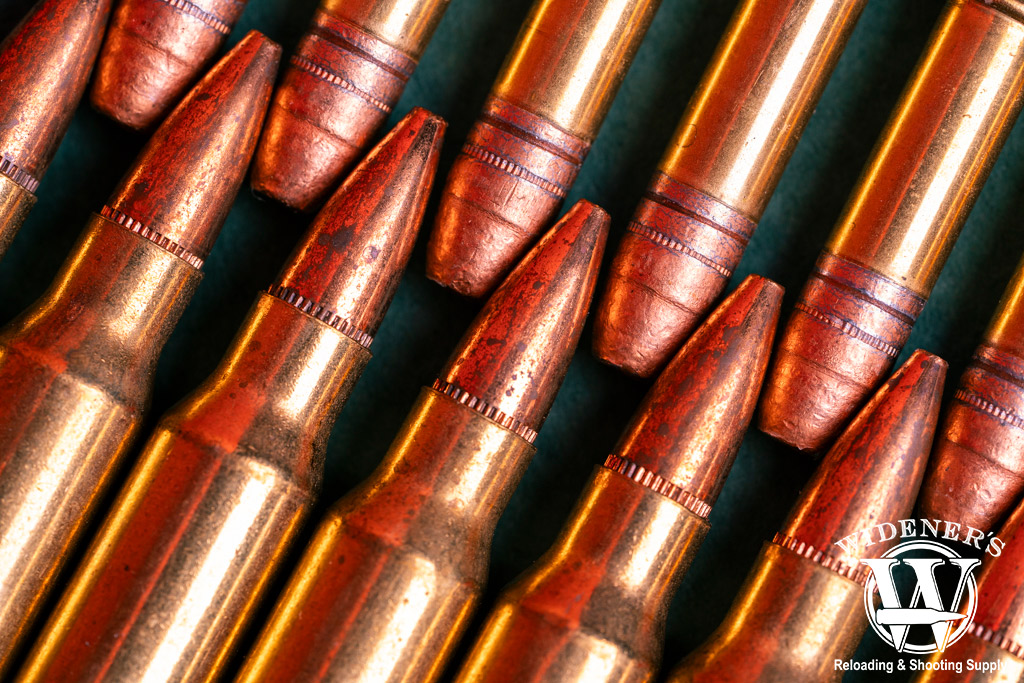
.22LR (Top) has less recoil, while the .223 Rem (Bottom) has more power and energy.
Let’s take some time and look at the numbers between 22LR VS 223. As mentioned, these rounds aren’t necessarily in the same class – this section will show you some numbers that explain why. Later we’ll discuss some ballistics for the 22LR VS 223.
| Cartridge Specs | .22 Long Rifle | .223 Rem |
|---|---|---|
| Parent Casing | .22 Long | .222 Remington |
| Bullet Diameter | .223“ | .224″ |
| Neck Diameter | .226″ | .253″ |
| Base Diameter | .226″ | .376″ |
| Case Length | .613″ | 1.76″ |
| Overall Length | 1.00″ | 2.26″ |
| Grain Weight | 29gr-60gr | 36gr-77gr |
| Max Pressure (SAMMI) | 24,000 PSI | 55,000 PSI |
.22LR (Long Rifle)
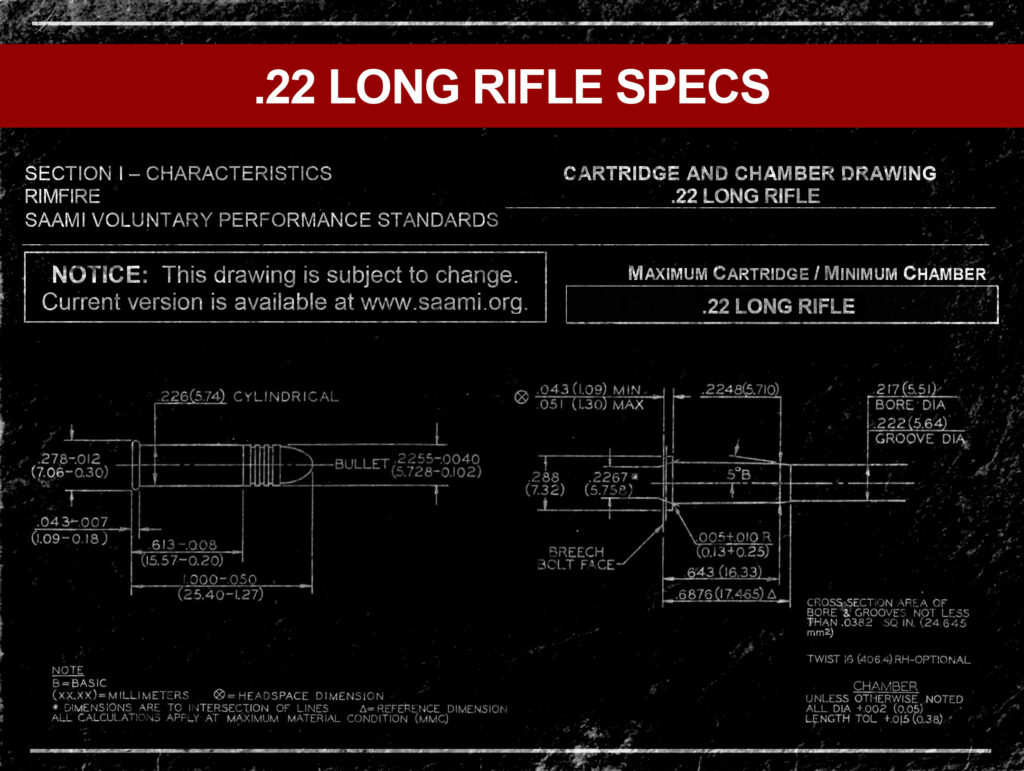
The 22LR rimfire may be diminutive in size, but it makes the most of it in performance.
The .22LR, or .22 Long Rifle, is a small rimfire cartridge that’s been around since the late 19th century. It’s one of the world’s most popular and widely used cartridges. The “.22” refers to the bullet’s diameter in inches. “LR” stands for Long Rifle, a reference to the cartridge’s relatively long case. The .22LR is renowned for its low recoil and affordability, making it a favorite for plinking, target shooting, and small game hunting.
- Designed: 1887
- Designer: J. Stevens Arms & Tool
- Type: Rimfire
- Case capacity: 10.5gr H2O
.223/5.56x45mm NATO

The .223 Rem is a widely used centerfire rifle cartridge for many applications.
The .223, similar to the 5.56x45mm NATO, is a centerfire cartridge developed in the mid-20th century. It’s a step up in power and performance compared to the .22LR. The “.223” in the name denotes the bullet’s diameter in inches (which is actually .224 inches), and the “NATO” signifies its use as a standard military round. This caliber is prevalent in both military and civilian rifles, including the AR-15 platform, and is suitable for varmint hunting, target shooting, and even some competitive shooting events.
- Designed: 1962
- Designer: Remington Arms
- Type: Centerfire Rifle
- Case capacity: 28.8GR H2O
Now that we’ve introduced our contenders, let’s dive deeper into the comparison.
Power & Performance
One of the most significant differences between these calibers is their power and performance. Right off the bat, it’s obvious that the .223 Rem outshines the .22LR in both categories. However, that’s not the complete story with these two as you’ll see below.
.22LR
The .22LR is known for its low recoil and relatively low muzzle velocity. It typically fires a small, lightweight bullet at moderate speeds, making it suitable for short-range shooting and plinking. While it’s not a powerhouse, it’s incredibly accurate within its effective range, making it ideal for precision shooting at closer distances.
.223
In contrast, the .223 is a more powerful round. It boasts higher muzzle velocity and more energy, making it effective at longer distances. This added power translates to better performance against varmints and predators and improved accuracy at extended ranges. The .223 also has a flatter trajectory, which means less bullet drop over distance.
Practical Uses

.22LR is a dual-purpose rimfire cartridge, meaning it can be fired in either rifles or pistols chambered for the caliber.
Now, let’s explore the practical applications between 22LR VS 223. The best way to do this is by highlighting their strengths in various applications. It’s no surprise, they overlap each other in several categories. It’s not uncommon to find gun enthusiasts who own similar guns chambered in both calibers. Many times this overlap is because the 22LR is much lower in cost, allowing the gun owner to do more training, at a reduced cost, with a similar gun.
.22LR
- Plinking: The .22LR is the quintessential plinking round. Its low recoil and affordability make it perfect for casual shooting and honing marksmanship skills.
- Target Shooting: Many competitive shooters start with .22LR to develop their fundamentals due to its low cost and minimal recoil.
- Small Game Hunting: The .22LR is suitable for hunting small game like squirrels, rabbits, and birds at close to moderate ranges.
.223
- Varmint Hunting: The .223 is highly effective against varmints and pests like groundhogs, coyotes, and foxes. Its flat trajectory and accuracy make it a popular choice for this purpose.
- Competitive Shooting: Competitive shooters appreciate the .223’s accuracy and relatively mild recoil. This makes it ideal for precision shooting in various disciplines, including 3-Gun competitions.
- Home Defense: Some homeowners opt for firearms chambered in .223 for home defense. This is due to its stopping power and low over-penetration risk when using appropriate ammunition.
Recoil Compared
Recoil can be a deciding factor, especially for new or recoil-sensitive shooters. If you’ve ever been handed a large caliber gun and fired it without knowing what to expect, you likely learned a lot about recoil in a hurry. Not only can it put you off from wanting to shoot again, but it can also leave you with bruises. Thankfully with these two calibers, there’s not much to worry about.
The .22LR
Recoil with the .22LR is minimal – almost negligible. This makes it excellent for beginners or anyone who wants an enjoyable shooting experience without the jarring kick of larger calibers. The minimal recoil also aids in maintaining accuracy during rapid-fire or follow-up shots.
The .223
While noticeably more robust than the .22LR, the .223’s recoil is still mild compared to larger centerfire cartridges. Most experienced shooters find it manageable, but it might be a bit much for those just starting. The mild recoil of the .223 allows for quick follow-up shots and better control in rapid-fire situations.
Ballistics
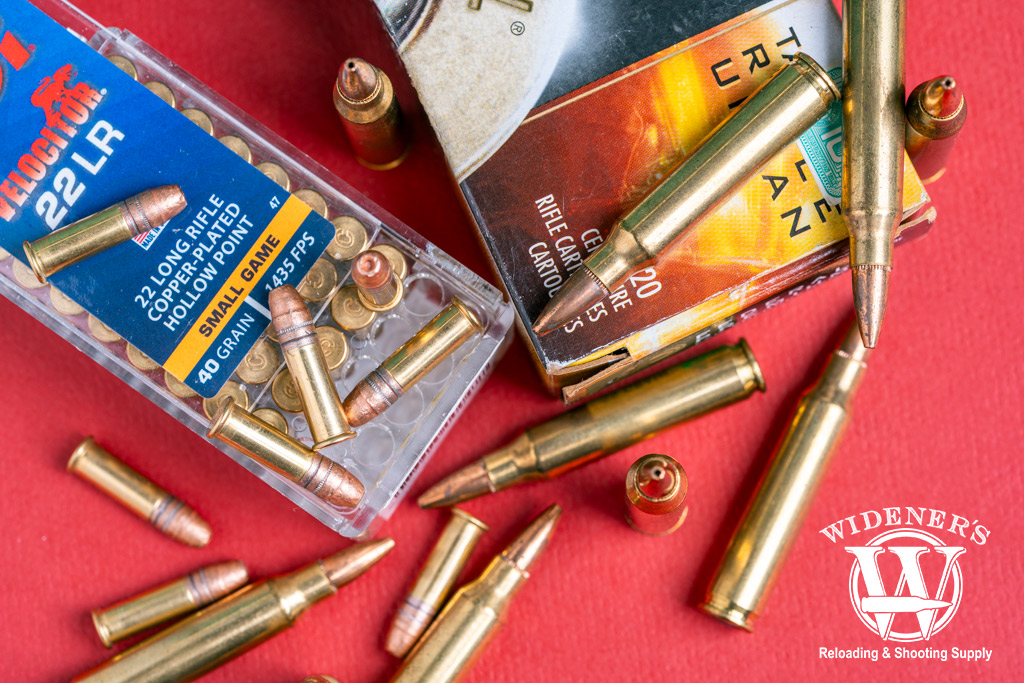
Both the 22LR VS 223 are capable of taking care of varmints and small game.
Understanding the ballistics of these calibers is essential for making informed decisions. These numbers will vary slightly based on the type of ammunition you’re using, the barrel length, and weather or wind conditions. With that in mind, let’s see how these two cartridges stack up.
The .22LR
Muzzle Velocity: Typically ranges from 900 to 1,300 feet per second (fps).
Effective Range: Effective accuracy is usually within 100 yards, though it can stretch farther in capable firearms.
Trajectory: Due to its lower muzzle velocity, the .22LR has a noticeable bullet drop at longer ranges.
The .223
Muzzle Velocity: Generally ranges from 2,800 to 3,300 fps.
Effective Range: The .223 is accurate at longer distances, with effective ranges extending beyond 300 yards.
Trajectory: The .223 boasts a flatter trajectory, resulting in less bullet drop than the .22LR.
Standard Ballistics
The 40gr LRN in .22LR offers standard performance. It hits 1,200 in muzzle velocity leaving the barrel, with 128 FT LBS of energy. Bullet energy drops quickly at 100 yards and beyond, giving it much less stopping power than the .223 Rem bullet. Wind drift is around 4.9″ at 100 yards. Bullet drop is another issue, leveling out at 100 yards and dropping 12″ below the point of aim at 150 yards.
A 55-grain cartridge in .223 features a muzzle velocity of 3,240 FPS and 2,222 FPS at 300 yards. The energy will be about 1,000 ft-lbs at 100 yards, 603 ft-lbs at 300 yards, and 339 ft-lbs at 500 yards. Wind drift sits at about 1 inch at 100 yards and 10 inches at 300 yards. Bullet drop is negligible until 300 yards when it falls 6.8 inches below the point of aim.
| Caliber | Bullet Type | Bullet Weight | Velocity (Muzzle) | Energy (Muzzle) | 100 Yards (Velocity/Energy) | 200 Yards (Velocity/Energy) | 300 Yards (Velocity/Energy) |
|---|---|---|---|---|---|---|---|
| .22LR | LRN | 40gr | 1,200 FPS | 128 FT LBS | 991 FPS/87 FT LBS | 758 FPS/51 FT LBS | 538 FPS/26 FT LBS |
| .223 Rem | FMJ | 55gr | 3,240 FPS | 1,282 FT LBS | 2,874 FPS/1,008 FT LBS | 2,536 FPS/785 FT LBS | 2,222 FPS/603 FT LBS |
Performance Ballistics
With a 40-grain copper-plated bullet, the .22lr will have a muzzle velocity of about 1,235 FPS, carrying 998 FPS out to 100 yards. You’ll also see about 135 ft-lbs of energy at the muzzle and 88 ft-lbs at 100 yards. Wind drift is around 4″ at 100 yards. Bullet drop is roughly 10.5 inches at 150 yards and it drops severely from that point.
For a performance 77-grain cartridge in .223, you’ll get a muzzle velocity of 2,720 FPS and 2,196 FPS at 300 yards. The energy will stay above 1,000 ft-lbs at 100 yards and drop to 712 ft-lbs at 300 yards, and 466 ft-lbs at 500 yards. Wind drift sits at about 1 inch at 100 yards and 9 inches at 300 yards. Bullet drop is negligible until 300 yards when it falls 9 inches below the point of aim.
| Caliber | Bullet Type | Bullet Weight | Velocity (Muzzle) | Energy (Muzzle) | 100 Yards (Velocity/Energy) | 200 Yards (Velocity/Energy) | 300 Yards (Velocity/Energy) |
|---|---|---|---|---|---|---|---|
| .22LR | CP-RN | 40gr | 1,235 FPS | 135 FT LBS | 998 FPS/88 FT LBS | 798 FPS/57 FT LBS | 592 FPS/31 FT LBS |
| .223 Rem | BT-HP | 77gr | 2,720 FPS | 1,265 FT LBS | 2,481 FPS/1,053 FT LBS | 2,255 FPS/869 FT LBS | 2,041 FPS/712 FT LBS |
Cost Comparison
This one is an important factor. Cost plays a significant role in the choice of ammunition for most shooters. Before you decide to invest in a gun of any caliber, you need to make sure that you can budget for the ammunition. You’ll need to be able to purchase enough practice ammo to become proficient with the gun. As well as, having a stockpile of self-defense ammo, or other specific purpose ammo to suit your needs.
.22LR
One of the most appealing aspects of the .22LR is its affordability. You can often find .22LR ammunition at a fraction of the cost of centerfire cartridges like the .223. This makes it an attractive option for those who want to shoot frequently without breaking the bank.
.223
As a centerfire cartridge, the .223 is generally more expensive than the .22LR. While it’s not prohibitively costly, it can add up quickly if you shoot frequently. However, those prioritizing its performance and capabilities might find the expense justified.
Ammunition Availability
The availability of ammunition can significantly impact your shooting experience. Fortunately, both of these cartridges are fairly easy to find.
.22LR
One of the greatest advantages of the .22LR is its widespread availability. You can find .22LR ammunition in almost any sporting goods store, gun shop, or even some grocery stores. It’s a caliber that’s consistently in stock, even during times of high demand.
.223
The .223 is also relatively easy to find but may not be as readily available as the .22LR. During times of increased demand or political uncertainty, you might encounter shortages or price spikes with .223 ammunition. However, it’s still a common caliber and is typically well-stocked in most firearm-related stores.
22LR VS 223: Two Capable Cartridges
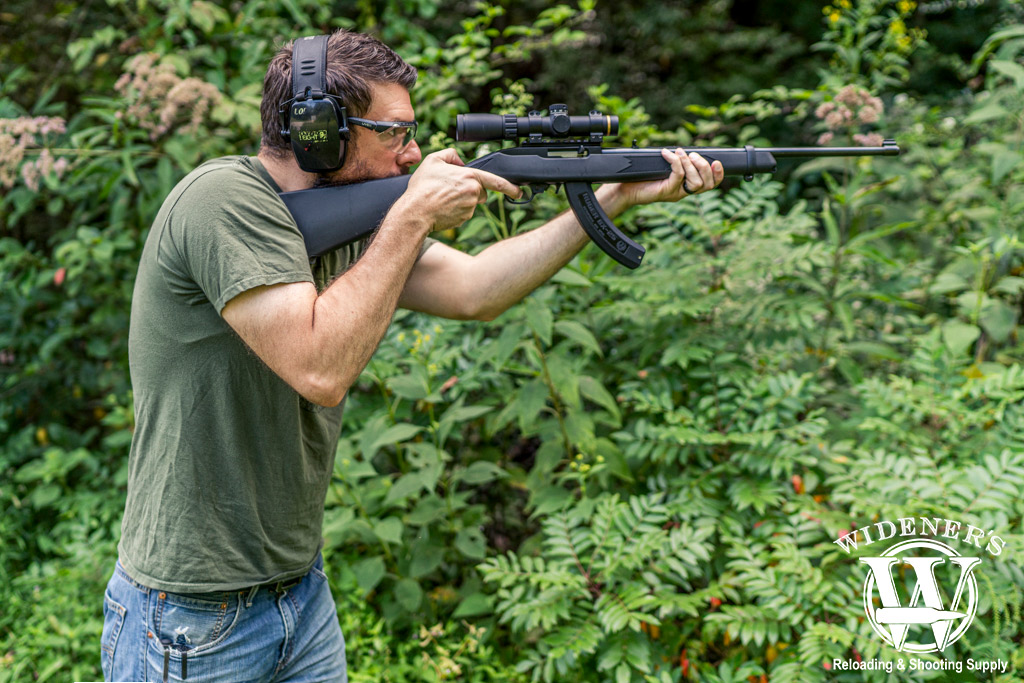
.22LR can’t beat .223 Rem in power or performance, but it can in pricing, which gives you more time at the range.
In the showdown between the 22LR VS 223, there’s a clear winner in power and performance. However, the real winner is gun owners who know how to harness the capabilities of both rounds. Why limit yourself to only one option? You can spend more time at the range, training, and plinking with the .22LR. When it comes time to do the real work, the.223 Rem will still be there where you stacked it.
Need an affordable, low-recoil cartridge for plinking, target shooting, or small game hunting at short distances? The .22LR rimfire makes an excellent choice. Its versatility and widespread availability make it an ideal option for many shooters.
If you need a more potent cartridge with greater range, accuracy, and versatility for varmint hunting, competitive shooting, or even home defense, the .223 is a solid pick. While it might cost more and have a bit more recoil, its performance justifies the investment for those who demand it.
Ultimately, the decision between .22LR and .223 ammunition comes down to your specific shooting needs, budget, and personal preferences. Whether you choose the smaller .22LR or the robust .223, always prioritize gun safety, responsible shooting practices, and training. Doing so will ensure an enjoyable and safe shooting experience.
The post 22LR VS 223: A Tale Of Two Calibers appeared first on Wideners Shooting, Hunting & Gun Blog.

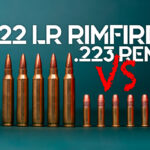

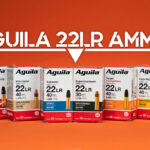
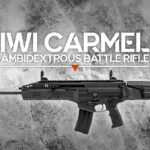


Leave a Reply